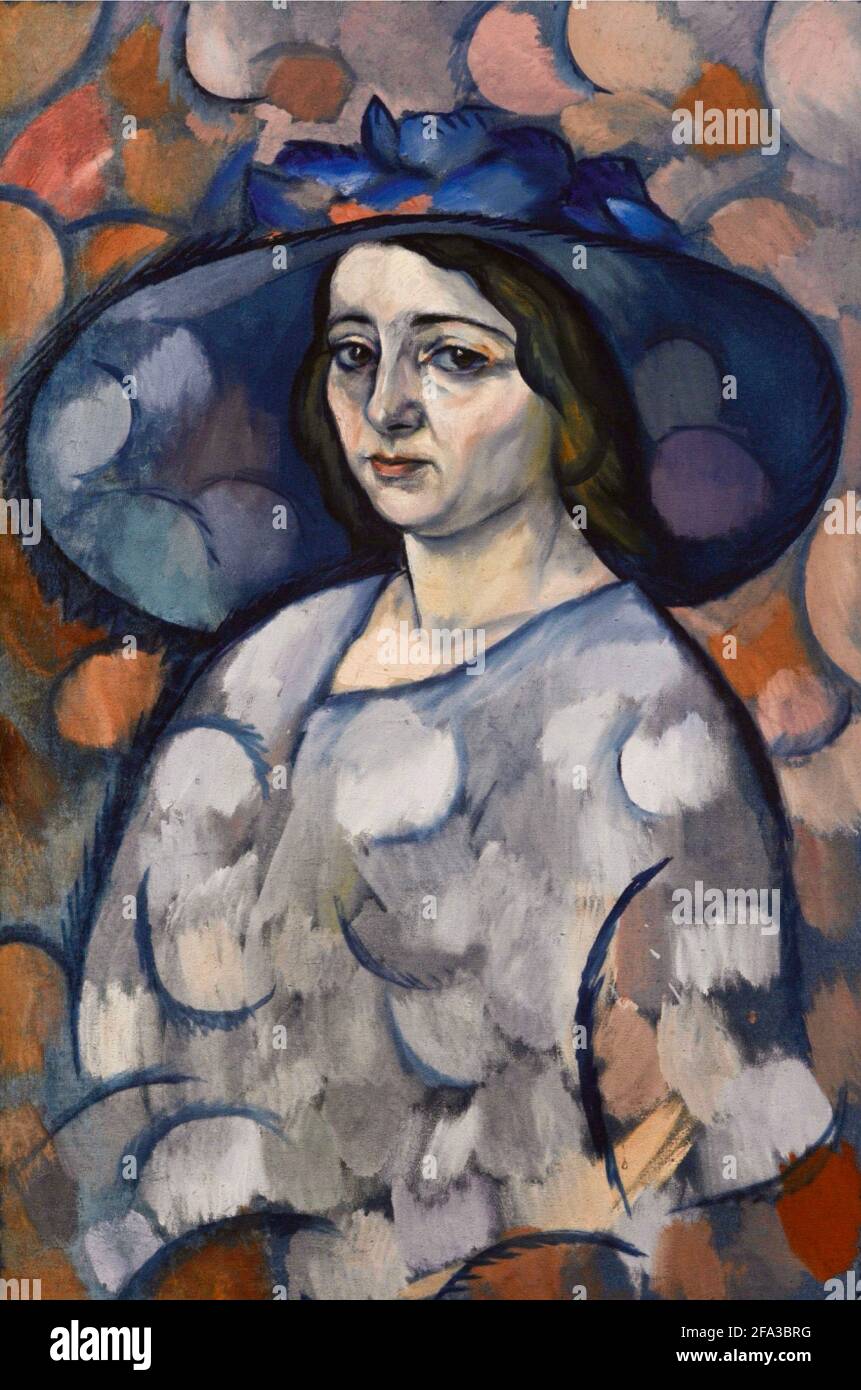Vladimir Baranov Rossine - Portrait of a Lady in a Blue Hat

Image details
Contributor:
steeve-x-art / Alamy Stock PhotoImage ID:
2FA3BRGFile size:
46.6 MB (1.8 MB Compressed download)Releases:
Model - no | Property - noDo I need a release?Dimensions:
3287 x 4960 px | 27.8 x 42 cm | 11 x 16.5 inches | 300dpiDate taken:
22 April 2021More information:
This image is a public domain image, which means either that copyright has expired in the image or the copyright holder has waived their copyright. Alamy charges you a fee for access to the high resolution copy of the image.
Born in Kherson, in the Ukraine, in 1888, Vladimir Baranov-Rossiné would spend his life and career between Russia and Paris. After studies in Odessa and St. Petersburg, he exhibited in early avant-garde exhibitions held in Moscow and St. Petersburg, alongside Mikhail Larionov, Natalia Goncharova, Alexandra Exter and the Burliuk brothers, among others. He also participated in an important exhibition in Kiev in 1908 devoted to the synthesis between painting, sculpture, poetry and music. An intense interest in the idea of a synthesis of the arts, a legacy of Russian Symbolism, would remain with Baranov-Rossiné all his life. In 1910, he left for Paris where, aside from frequenting Russian émigré circles, he was particularly friendly with Hans Arp and Robert and Sonia Delaunay. His colourful paintings of the period show an assimilation of Cubism, Futurism and Orphism, and he exhibited regularly at the Salon des Indépendants. At the outbreak of the World War First, Baranov-Rossiné moved to Norway where he would remain until 1917 when he went back to Russia. Between 1917 and 1925, his production was prolific; he exhibited alongside Marc Chagall, Nathan Altman, Yurii Annenkov and other representatives of the Soviet avant-garde, and he taught painting in a studio in Petrograd. At the same time, he explored his earlier interest in a synthesis of the arts, inventing a "colour-clavier" and presenting "optophonic" concerts in Moscow theatres, in which, as the piano's keys were played, the music was "translated" by coloured disks projected on a screen. Baranov-Rossiné returned to settle in Paris in 1925. He continued to paint, in a more Surrealist manner, made a few sculptures, and experimented with materials, colours and sounds, exhibiting regularly in the Parisian Salons. In 1943 he was arrested in France by the Gestapo and deported. He died in the Auschwitz concentration camp (Poland). Margit Rowell